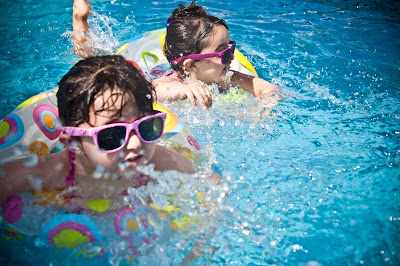Getting to know your group is an important part of a successful social group. You want to know as much as you can about the kids in your group before they arrive so you know whether or not the activities you’ve chosen for the day are appropriate and how best to structure your day. Here are some tips on getting to know your group so you can have the best social group ever!
1. How many kids are
coming?
-- Is your social
skills group going to have 4 kids in it or 14? Knowing how many kids are coming
to your group is important not only for knowing how many adults will need to be
present, but also for planning your activities. CandyLand is a lot harder to
play with a big group than a small one, and team activities are pretty much
impossible with teams of one or two. When you’re scheduling your social group,
double check how many kids are signed up for a given day and plan accordingly.
 |
| This space is better for a big group, while the room below would be better for two or three kids |
2. 2. What are your kids’
skill levels and interests?
-- Think about each
of your kids’ skill levels, and individualize the activities and goals. If some
of your kids are nonverbal, playing something like HeadBandz or other similar
games is going to pose a serious challenge. Similarly, if some of the kids in
your group have higher skill levels and would benefit more from activities like
cooking lessons or science projects, having the entire group play Hi Ho Cherryo
because some of the other kids need counting practice is going to be a waste of
time that could be used building other skills. If your group has vastly
different needs, levels, and interests, think about breaking up into smaller
groups for some activities to better foster the social skill development that
your kids need. In a similar vein,
it’s not appropriate to pair up, for instance, a nonverbal 15 year old and a
nonverbal 5 year old. Though they may have similar verbal goals on a basic
level, their interests and other goals are probably going to be very different.
For more information on individualizing goals, check out our post here.
 |
| This project is fun for kids working on their fine motor skills, but might not be appropriate for kids who have already mastered those skills. |
3.
3. What are your kids’
behaviors?
-- Are some of your
kids more prone to tantrums or running away (eloping)? Are some of your kids
likely to join in the screaming if another kid has a tantrum? Know what kind of
behavior is more likely to happen with each kid. If you know one of them is
likely to elope, maybe don’t play a lot of games near the door or play outside.
If a kid is known to pull hair, keep an eye on them if they’re playing with
kids or adults with long hair. Knowing your kids’ behaviors and their
antecedents (what comes before the behavior) is an important part of having a
functional and successful social group. If you notice a behavior that happens
with some frequency during social group, keep an eye out and see what happens
before that behavior. For instance, if one kid frequently has tantrums, look
out for what changed in their environment immediately before the behavior occurred.
Once you know the antecedent, you can decrease the probability that the behavior will occur by making adjustments to the social group environment. A great way to figure out antecedents is to do a functional
analysis. These analyses should only be conducted by a certified behavior analyst who has extensive experience, but once completed, should yield an accurate and reliable explanation of behavioral patterns.























